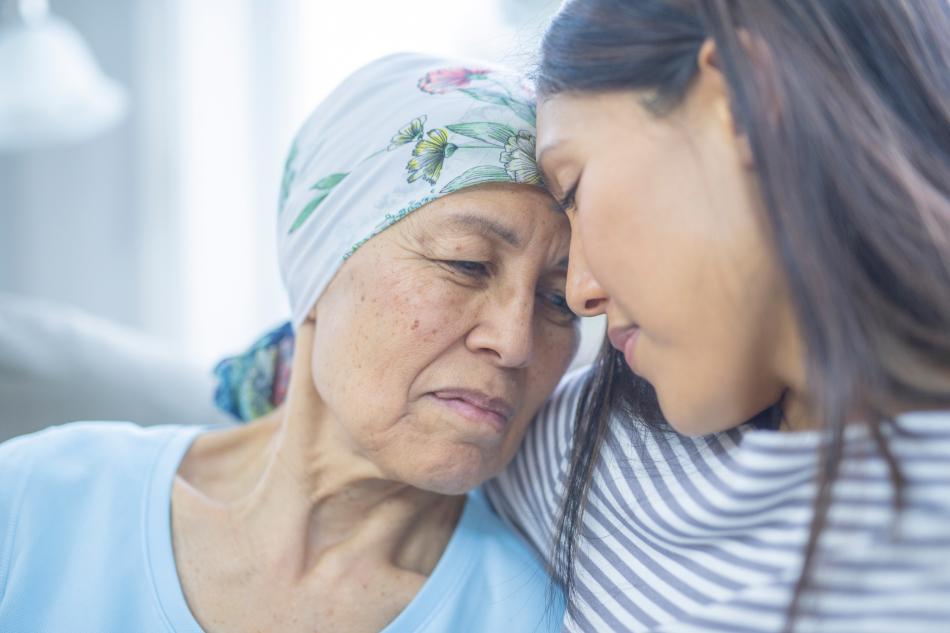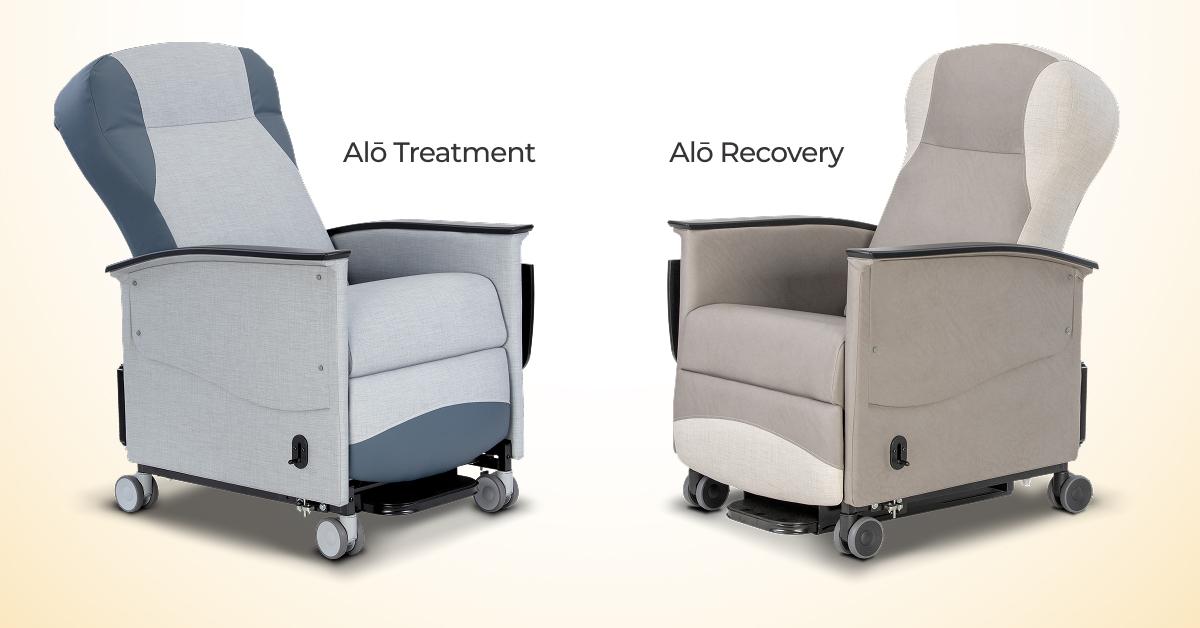
As oncology care enters a new era of innovation and complexity, treatment centers are under increasing pressure to evolve. From expanding virtual care to enhancing in-clinic experiences, facilities must meet the dual demands of high-quality care and operational efficiency—without compromising patient comfort.
For cancer center directors and clinic administrators, adapting to these evolving trends is crucial—not only to improve patient outcomes but to remain competitive and operationally sound. This blog takes a deeper look at the trends shaping oncology care in 2025 and offers real-world strategies to keep your treatment spaces ahead of the curve.
What’s Driving Progress in Cancer Care?
Advancements in diagnostics, targeted therapies, and virtual care have expanded access to more personalized and effective cancer treatment options. While some patients now receive oral medications at home or begin their treatment journey via telehealth, the majority still depend on in-clinic treatments such as infusion therapy, radiation, and surgical interventions.
Patients are seeing meaningful benefits from:
- Precision Medicine: Genetic testing and targeted therapies allow for individualized treatment regimens, reducing unnecessary side effects.
- Immunotherapy: Innovations in immune-based treatments are extending survival for many cancers once considered untreatable.
- Telehealth Integration: Virtual visits offer convenience and continuity of care, especially for routine check-ins or symptom monitoring.
- Multidisciplinary Care Models: More clinics are adopting team-based care approaches, bringing oncologists, nutritionists, mental health specialists, and social workers together to support patients holistically.

Sign up to get the latest industry news and offers right in your inbox
Complex Realities in Modern Oncology Care
Even with promising advancements, oncology clinics face a range of operational and patient-centered hurdles that require ongoing attention. These challenges are shaping how care is delivered, how clinics are staffed, and how patients engage with their treatment plans.
Geography Shouldn’t Determine Prognosis
Access to quality cancer care still varies widely based on location. Patients in remote or underserved regions often face long commutes, delayed appointments, and fewer treatment options. This disparity affects everything from early diagnosis to survival rates—highlighting the need for hybrid care models and mobile outreach efforts.
The Hidden Costs of Cancer
Beyond the clinical aspects of cancer, many patients deal with “financial toxicity”—the overwhelming burden of paying for treatments, travel, medications, and unpaid time off work. These pressures can lead patients to skip or postpone care, ultimately affecting outcomes and clinic performance metrics.
Fatigue That Extends Beyond the Physical
Ongoing treatment regimens can be mentally and emotionally exhausting. Repetitive appointments, long infusion sessions, and persistent side effects contribute to psychosocial fatigue—a combination of physical weariness and emotional burnout. Clinics are increasingly expected to offer more holistic support, including mental health resources.
Staffing Pressures at Every Level
Oncology nurses and support staff are navigating heavier workloads, tighter schedules, and growing expectations around patient experience. Clinics are being challenged to streamline workflows, reduce physical strain, and create work environments that support long-term staff retention.

How Clinics Can Adapt to Improve Oncology Care
To meet the demands of modern oncology treatment, facilities are rethinking their care delivery models and patient environments. Consider these key areas of focus:
- Expand Access through Hybrid Care: Implement virtual consultations, follow-ups, and symptom triage services to reduce unnecessary in-person visits and free up clinical capacity. As seen at Moffitt Cancer Center, on-demand virtual care platforms help patients receive critical support while easing the burden on facilities.
- Improve the In-Clinic Experience: With virtual care streamlining the pre-and post-treatment journey, the in-person treatment experience becomes even more central to a patient’s perception of care. A well-designed, comfortable treatment room can reduce anxiety, boost satisfaction, and encourage treatment adherence.
- Support the Whole Patient: Addressing mental health and quality of life is essential. Integrate social work services, offer access to support groups, and create environments that reduce stress. Details matter—from calming color palettes to comfortable, private seating arrangements.
- Optimize Staffing with Smart Design: Create ergonomic, efficient treatment environments that support staff workflows and reduce physical strain. When nurses and providers have easier access to patients and equipment, care is delivered more effectively and with less fatigue.
Read More: “TLC Won’t Cure Cancer, but It Will Help”
Seating That Supports Healing and Operations
In oncology clinics, seating isn’t just a piece of furniture—it’s an integral part of the treatment experience. For patients spending hours in infusion sessions and for staff managing high-acuity care, the right chair can make a measurable difference.
- Built for the Long Haul: Infusion treatments often last several hours. Without ergonomic support, patients may experience discomfort that leads to unnecessary stress or even skipped appointments. Purpose-built seating helps maintain comfort, circulation, and emotional calm during long sessions.
- Designed for Staff Efficiency: Chairs with powered recline, swing-away arms, and integrated accessories reduce strain on caregivers and streamline patient access. These features support faster, safer care delivery—especially valuable when staff are stretched thin.
- Engineered for Infection Control: Immunocompromised patients require a clean, controlled environment. Medical-grade upholstery, sealed seams, and easy-to-disinfect surfaces help clinics meet infection prevention standards without added cleaning complexity.
- A Reflection of Care Quality: The environment sends a message. Comfortable, well-designed seating shows patients that your facility values both clinical excellence and human-centered care.

The Alō Treatment & Recovery Chairs from Champion Healthcare Solutions
Designed with the needs of modern oncology treatment in mind, the Alō Treatment and Alō Recovery chairs offer a combination of advanced clinical features, durable construction, and patient-centered comfort—making them ideal for infusion rooms and cancer care environments.
Both models are engineered to support extended treatments while promoting safety, mobility, and caregiver efficiency. Whether you’re outfitting a high-volume infusion clinic or a private treatment room, these chairs deliver the versatility and reliability today’s oncology settings demand.

Alō Treatment Chair
The Alō Treatment is built for high-acuity care environments where both patient comfort and caregiver access are critical. Designed with fully powered controls and medical-grade materials, it provides effortless positioning for long treatment sessions and easy cleaning between uses.
Key Features:
- Powered Recline with supine Trendelenburg positioning for enhanced patient comfort and emergency response
- Swing-away arms for easy lateral transfers and better caregiver access
- Fold-down side table for patient convenience during long infusions
- Durable steel frame and 4″ dual thermoplastic casters for safety and mobility
- Healthcare-grade upholstery with sealed seams for infection control
Alō Recovery Chair
The Alō Recovery offers a softer, more residential aesthetic while retaining the clinical functionality needed in oncology recovery and step-down care areas. Its low-profile frame and plush cushioning provide a welcoming appearance—perfect for spaces where emotional comfort is as important as physical support.
Key Features:
- Powered recline and independent footrest control for personalized comfort
- Fixed or swing-away arms based on your clinical preference
- Contoured seating and a lower seat height for easier ingress and egress
- Optional accessories like heat, massage, and central-locking casters
- Stylish, customizable design with a wide selection of fabrics and finishes
Take the guesswork out of choosing the right chair—use our new virtual chair configurator to build and preview your selection online. Then, request a quote for your facility.
